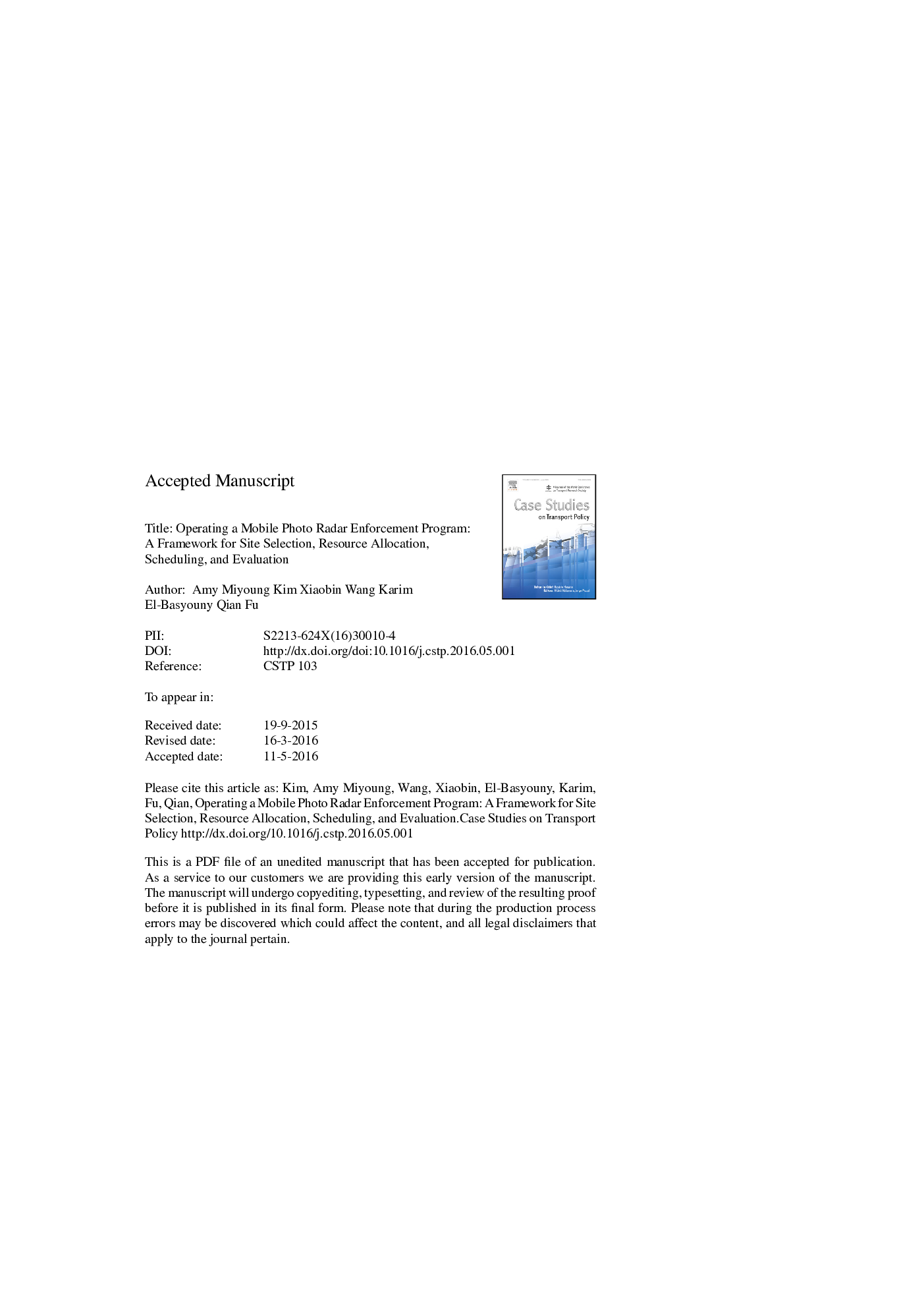| Article ID | Journal | Published Year | Pages | File Type |
|---|---|---|---|---|
| 4911633 | Case Studies on Transport Policy | 2016 | 31 Pages |
Abstract
This paper introduces a systematic, data-driven framework by which to operate a mobile photo radar enforcement (MPRE) program, consisting broadly of site choice, enforcement resource allocation and scheduling, and evaluation. The overall goal is provide a framework for operating an MPRE program that is well-defined and replicable, in order to improve efficiency in deploying finite enforcement resources and efficacy in improving traffic safety. To illustrate the process, the proposed program was applied to simulate a deployment plan for one month using data from the City of Edmonton. The results of program application were assessed against the results of the existing MPRE program in place in May 2014, using several candidate short-term evaluation measures. Based on the results, it is expected that with implementation of the proposed program, the City of Edmonton's MPRE program may observe moderate to high improvements in travel distance efficiency and coverage of sites with safety issues. The promising test results do further indicate the need for a full-scale, real-life deployment of the proposed program. This proposed MPRE program design framework can provide planners, engineers, and law enforcement professionals with a systematic, analytic, and data-driven process by which to operate a MPRE program. Despite that the design framework was built in response to the needs of the City of Edmonton's current MPRE program, its development was generalized for adaptation and adoption within any jurisdiction looking to begin a new program, or make improvements to an existing one, in their pursuit of greater traffic safety.
Keywords
Related Topics
Physical Sciences and Engineering
Engineering
Civil and Structural Engineering
Authors
Amy Miyoung Kim, Xiaobin Wang, Karim El-Basyouny, Qian Fu,
